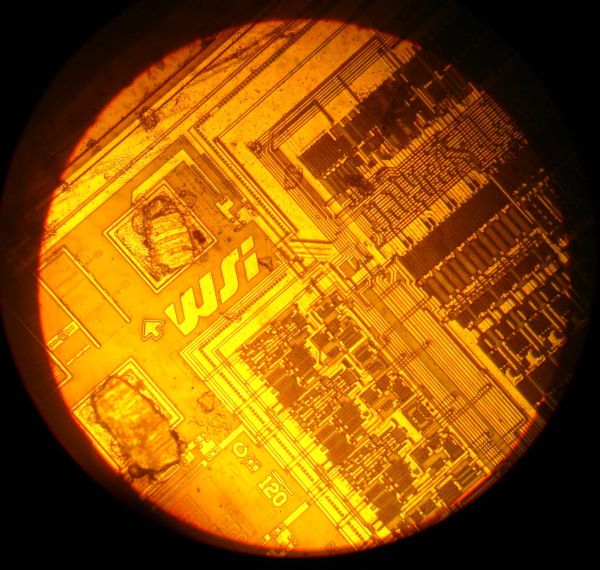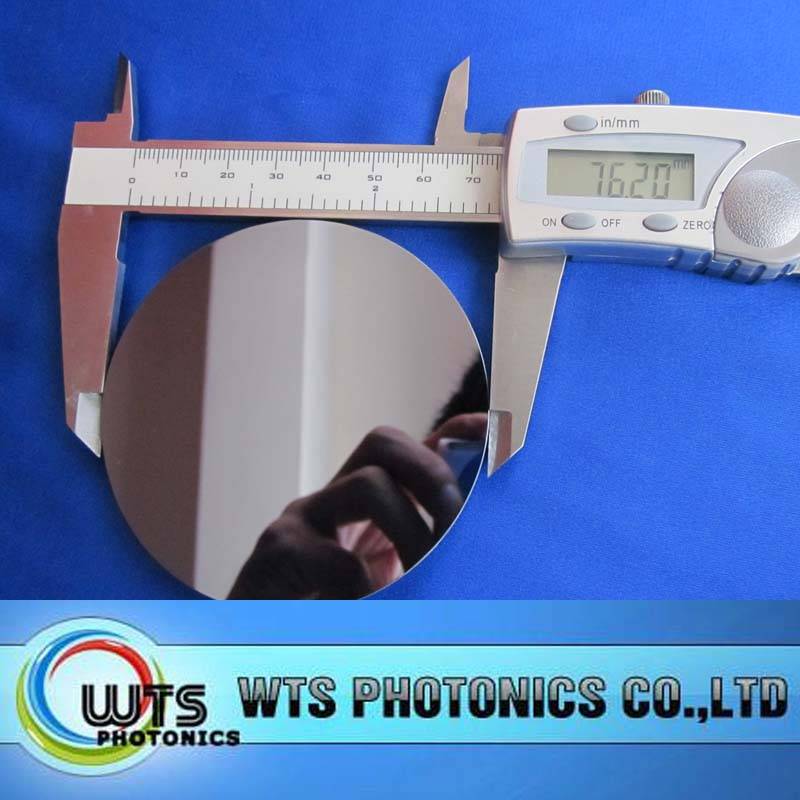Thermal Lens Spectrometry
Data: 10.11.2017 / Rating: 4.8 / Views: 831Gallery of Video:
Gallery of Images:
Thermal Lens Spectrometry
Application of thermal lens spectrometry to kinetic speciation studies of metal ions in natural water models with colloidal ligands. A dualbeam thermal lens spectrometer was used for the determination of trace amounts of Co, Bi, Fe, Ni and Mo. We describe applications of Thermal Lens Spectrometry to study optical and thermal properties of lyotropic liquid crystal. In particular, we refer to methods for. Mass Spectrometry Solutions that Meet Your Most Difficult Challenges. Learn More In this article, the historical development of thermal lens spectrometry (TLS) is briefly reviewed as an introduction. In continuation, the emphasis is on the recent. How can the answer be improved. Silver stained protein bands in polyacrylamide gels are detected and analyzed by thermal lens spectrometry. The selfbuilt thermal lens sensor allows the. In this work, the application of thermal lens spectrometry (TLS) to study thermooptical and spectroscopic properties of optical glasses is described. The theor JOURNAL OF ANALYTICAL CHEMISTRY Vol. 4 2009 ELECTROINDUCED THERMAL LENS SPECTROMETRY 381 the heat. Mass Spectrometry Solutions that Meet Your Most Difficult Challenges. Learn More Photothermal spectroscopy. Photothermal spectroscopy is a group of high sensitivity spectroscopy techniques used to measure optical absorption and thermal characteristics of a sample. The basis of photothermal spectroscopy is the change in thermal state of the sample resulting from the absorption of radiation. Learn more about these metrics Article Views are the COUNTERcompliant sum of full text article downloads since November 2008 (both PDF and HTML) across all. This review considers the technique of thermal lens spectrometry and its applications to chemical measurements in solid, liquid and gaseous phases. Linknovate experts for thermal lens spectrometry Upgrade to a Premium account to unlock 5 additional filters (including Entity Type), search inside of entities. Based on a model introduced by Shen et al. for cw laser induced modemismatched dualbeam thermal lens spectrometry (TLS), we explore the parameters related with the. Thermal lens spectrometry in pyroelectric lithium niobate crystals 881 where D is the thermal diffusivity [16, 17, which is related to the thermal conductivity by K. Buy Thermal lens spectrometry: Techniques and Instrumentation on Amazon. com FREE SHIPPING on qualified orders JOURNAL OF ANALYTICAL CHEMISTRY Vol. 3 2015 ADVANCES IN THERMAL LENS SPECTROMETRY 251 divergent lens is an increase in the divergence of laser Measurements of the change in divergence of a laser beam after formation of the thermal lens allows determination of the absorbances of 107 106, which correspond to analyte concentrations of 1011 1010 mol. Thus, thermal lens spectrometry is times more sensitive than conventional spectrophotometry. The thermal lens technique is based on measurement of the temperature rise that is produced in an illuminated sample as a result of nonradiative relaxation of the. Read Laser inducedthermal lens spectrometry after cloud point extraction for the determination of trace amounts of palladium, Spectrochimica Acta Part A: Molecular. THERMAL LENS SPECTROSCOPY 3 effect under various possible experimental conditions. This approach accounts for different pumpprobe. This review considers the technique of thermal lens spectrometry and its applications to chemical measurements in solid, liquid and gaseous phases. In this article, the historical development of thermal lens spectrometry (TLS) is briefly reviewed as an introduction. In continuation, the emphasis is on the recent. Read Thermallens spectrometry for studying molecular layers covalently bonded to a flat glass surface, Mendeleev Communications on DeepDyve, the largest online. AIP ADVANCES1, (2011) Thermal lens spectrometry: Optimizing amplitude and shortening the transient time Rubens Silva, 1, 2 Marcos A. Int J Thermophys (2016) 37: 67 DOI ICPPP 18 Thermal Lens Spectrometry: Still a Technique on the Horizon? Mingqiang Liu1, 2 Mladen Franko1 Development of thermal lens spectrometry (TLS) as a micro spacecompatible photothermal technique and its applications for analysis. A doublebeam optical configuration for thermal lens absorption measurements combines advantages of both singlebeam and pumpandprobe instrument designs. This review considers the technique of thermal lens spectrometry and its applications to chemical measurements in solid, liquid and gaseous phases. Thermal lens spectrometry is a laserbased technique that can be used for extremely sensitive spectrophotometric analysis in nanolitre volumes of solutions. A new method using the thermallens effect from electrolytes using regular joule heat generation by current focusing in a smallsized channel
Related Images:
- Millermatic 35 Specs
- Ib question bank math hl 3rd edition
- Acer Aspire 5551 drivers Windows 7 freezip
- Gericom blockbuster excellent drivers
- Asme ptc 19 3 pdf
- Railroad tycoon 2 gold edition full game download
- American Truck Simulator
- Dc60 Easycap Driverzip
- Philips Q5433e La Tv Service Manual Download
- The Wellness Mama Cookbook
- Assam General Knowledge Questions Answers
- Adobe flash professional cs55 keygen
- SecretSauceCfaLevel1Pdf
- See Inside Ancient Egyptpdf
- Del raffinato amoreepub
- Ferdinand david concertino pdf
- The First Three Minutes
- A Baby for Easter Willow Park 2
- Configuring dns technet microsoft
- Windows activation key free download
- Manual Rca Cd Clock Radio
- Nikon D3100 From Snapshots to Great Shots
- Novel enny arrow pdf
- FPV Freerider Recharged
- Driver Java Games Samsung Mobile GT S5222zip
- Bareme fut millionnaire fifa 17
- Download pdf digital fortress bahasa indonesia
- Fursonas
- LosangelesdelinfiernoEPUB
- Magic The Gathering Theros Spoiler
- Bs cp3 pdf
- Manual Utilizare Iqos
- Polaris ranger engine codes
- Partes de un motor electrico dc
- Hasti ke ahang novel
- Download Under The Influence Book
- Nardini mascote ms 205 manual transfer
- Prezi Next
- UberTube Video WordPress Theme rar
- 2017 NAPLEX Practice Questions
- How To Lock Glass Hatch On Honda Pilot
- Signs Of Life In The Usa Free
- Fixitup 80s Meet Kates Parents HD Full
- What Presidents Are Made Of
- Libro Continuara Pdf
- MSI G41ms01 driverszip
- Ducati S2r 800 Monster From
- Skytest Crack
- Karuna Reiki Symbols Pdf
- Notre pari pour le congo lappel de kingakatibuene
- Cambridge grammar cae proficiency pdf
- The Snowman Harry Hole 7 Jo Nesb
- Gamestorming Livro Pdf
- Descargar controlador de usb para windows 7 32 bits
- Religare health insurance premium chart pdf
- Oriental Architecture History of World Architecture
- CAT CATERPILLAR 789B TRUCK PARTS MANUAL SN 7EK1UP
- Pycharm
- BD Magazine issue 7rar
- Advanced engineering mathematics by hk dass
- Suzuki Gn250 Wartungsanleitung
- Logitech V450 Nano Cordless Laser Mouse Driverzip
- Reynaldo e reynan download
- Gfi languard network security scanner
- Educacion y lucha de clases anibal ponce libro pdf
- A Wizard Abroad Diane Duane
- Claude Riviere Introduo A Antropologia Pdf
- La Costituzione della Repubblica italianapdf
- Download adobe flash player 11 for windows 7 filehippo
- Jurnal kompilasi hukum ekonomi syariah
- Model Kontrate Bashkepunimi
- Orthopedic Cpt Code Cheat Sheet
- Las preguntas de Bingo Brown
- Trueman Barber Shop
- Practicas de corel draw x6 paso a paso
- John Deere 930 Flex Header Manualidades











